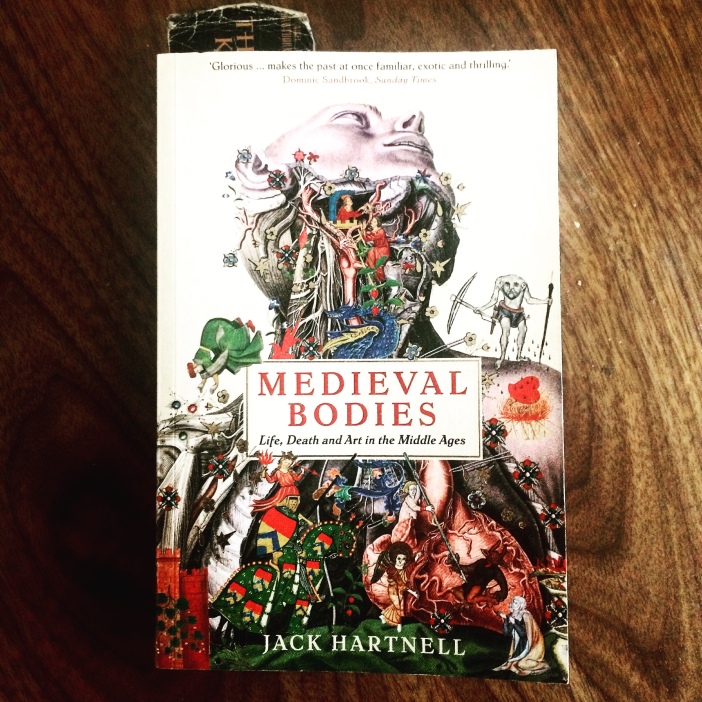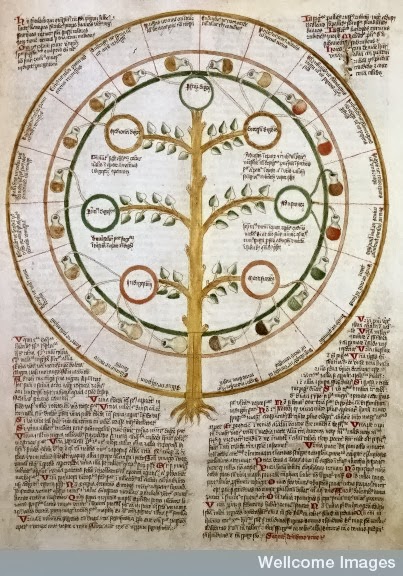
In modern life we tend to look down on the Middle Ages. Think of medieval times and we envision London with its peasants, extreme poverty, mud, and plague outbreaks.
Jack Hartnell’s lively work sets the record straight, providing enthralling insights in Europe during the era.
It’s a colourful and engaging tome, shedding light on the art of the era, along with what your average medieval person was up to on a daily basis.
Medieval Bodies: Life, Death, and Art in the Middle Ages
Europe’s Middles Ages—medieval times, if you please—ran from the 5th through to the 15th century. It came about with the end of the western Roman empire, before being succeeded by the Renaissance period and the Age of Discovery.
That’s a period Laurence Bergreen’s Over the Edge of the World documents in enthralling fashion.
During that time Europe went through often cataclysmic issues ranging between relentless outbreaks of killer diseases to war.
Along with the disastrous medical procedures of the day, it kind of makes you happy to be alive here in 2019.
But whilst it’s easy to think of life back then being horrible, it doesn’t tell the full story. Whilst times were indeed hard, your average London peasant was also as concerned with indigestion as you and I.
This was also a time of fantasy. With limited knowledge of the world around them, religion dominated the day and wildly imaginative metaphorical and miraculous occurences seemed possible.
And it’s one art historian Jack Hartnell brings to love in this fabulous work from 2018.
This is like entering a familiar, but alien, world. What you’ll discover went on in medieval times is so distinctly human, yet we’re now so distant from the activities a lot of happenings will seem like from a different species.
So there’s a lot of abstruse information flying about. For instance, in the Middle Ages there were unusual ideas about the functioning behind hair growth and how the human brain worked.
Hartnell breaks all that down so it’s easily understandable. Which makes it all the more fascinating.
Complementing that lot are many incredible works of art from talent long gone. One piece includes a wheel of urine from a German medical manuscript in 1420.

That’s to do with uroscopy, which was the medical belief examining urine could indicate what disease someone had. Doctors of the day were obsessed with the stuff. As Hartnell writes:
"These vivid descriptions of urine show just how sensory a task physicians were undertaking when inspecting patients' samples, with uroscopy texts encouraging all sorts of behaviour at the bedside: testing the viscosity of the urine and any particles suspended within, grading its smell or evaluating its sweetness or bitterness. Shaken, stirred, sniffed, even tasted, urine was reified in such flourishing trees, turned from effluvia to a careful diagnostic tool."
Such confusion over medical practices continued for centuries after. We think to more recent times in The Madness of King George and the film’s delusional doctors.
One, Dr. Pepys, is utterly infatuated with stool samples.
Whilst Hartnell’s excellent work is a medical book at heart, the artistic flourishes and insights into the weird (and often not so wonderful) way of life back then is endlessly entertaining.
You’ll learn about nuns plucking penises from a tree. Bizarre medical procedures. Fears about indigestion. And the flatulists hired to entertain the royal court.
Wellcome Collection
During several recent visits to London, a highlight was to take a trip to the Wellcome Collection near Euston train station.
It’s a free museum and library that explores medical artefacts, curiousities from history, and art stuff. Styling itself as the “free destination for the incurably curious”, it’s a fabulous place to visit.
Along with Profile Books, Wellcome helped to publish Hartnell’s work and it’s one of many excellent books we’ve picked up from the museum.
Roy Porter’s superb Blood & Guts: A Short History of Medicine is another tome we bought from the nifty little shop selling other items such as postcards.
There’s also quite a bit of art and stuff around, plus random men defying physics by standing on ceilings like this.
If you’re ever in London and around the Euston area, Wellcome is a must.
It’s kind of like the Atlas Obscura of the medical world. Weird curiosities for those of us with an inquisitive mind.
It’s free, after all, so you can turn around the latest exhibition, take a look at the library, grab a bite to eat, and then tour the shop. Do so. And forever hold your teeth.

I’ve always thought the medieval period to be kind of odd, particularly given that name ‘middle’. It’s as if, around the fifth century, somebody said ‘well, the ancient world’s over now and we’re in a kind of middle time before things get modern’. Add to that their funny ideas about urine, as you point out here, and their obsession with the wing-loading of swallows, and it definitely was a very strange time.
LikeLiked by 1 person
Not knowing anything about the world and turning to religion for answers, along with whatever flights of fancy enter your head… deeply weird for us now. Very much like a Monty Python sketch. But it would be interesting to journey back and spend a day in medieval London. Maybe. Or just read this book again.
LikeLiked by 1 person
Absolutely fantastic book for Ray 😂😂😂
LikeLiked by 1 person
You’ll have to steal a copy!
LikeLiked by 1 person
I’m armed & ready!!! 😂
LikeLiked by 1 person
Get your war cry primed, “BBBBOOOOKKKSSS!!!”
LikeLiked by 1 person